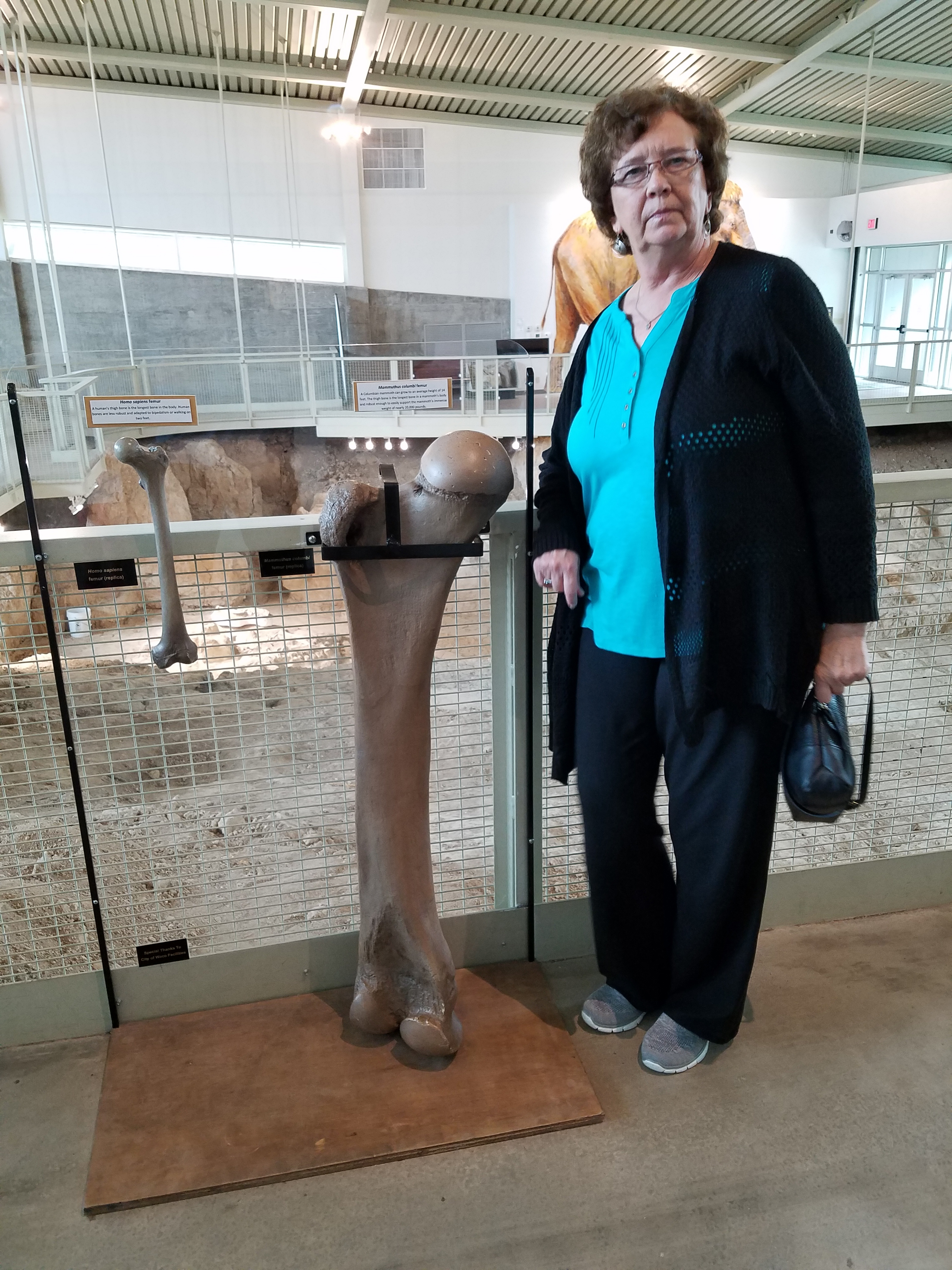Waco Mammoth National Monument, TX (Tim & Lois)
2/9/18 - Central Texas (2 hours south of Dallas)
Click picture to see full size.
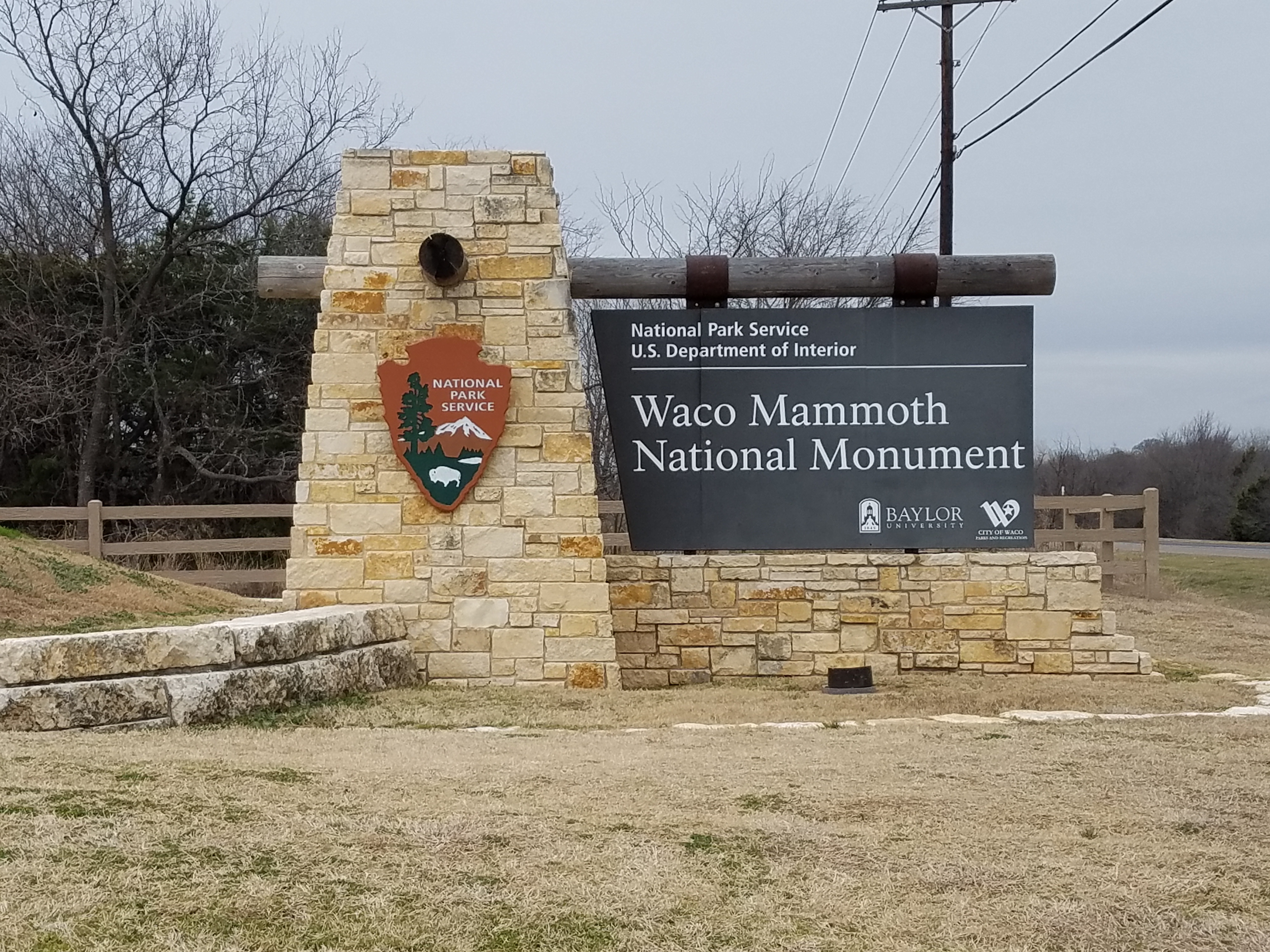
Designated a national monument in 2015, this is one of 33 such designations by Barack Obama during his presidency. Many people in nearby Dallas are probably unaware there is a national monument so close. Tim only found it because he was specifically looking for national sites in Texas that he hadn't yet visited. When Tim announced that he wanted to stop and visit this site on one of our regular treks between Dallas and San Antonio, Lois rolled her eyes and inwardly groaned at getting roped into such a boring stop-over. But as we were leaving after the hour tour, Lois volunteered that it really was a pretty cool place and she was glad we had stopped. Tim felt quite vindicated!
In 1978, a couple men decided to go explore along the banks of the Bosque River looking for arrowheads or fossils. There they stumbled upon what looked like a very large fossilized bone, way too big to be from a mere cow, so they carefully dug it out and took it to nearby Baylor University. There the bone was identified as being a femur from a Columbian mammoth (Mammathus columbi), an extinct species that inhabited North America from southern Canada to as far south as Costa Rica. The particular bone found was believed to be 50,000 to 65,000 years old.
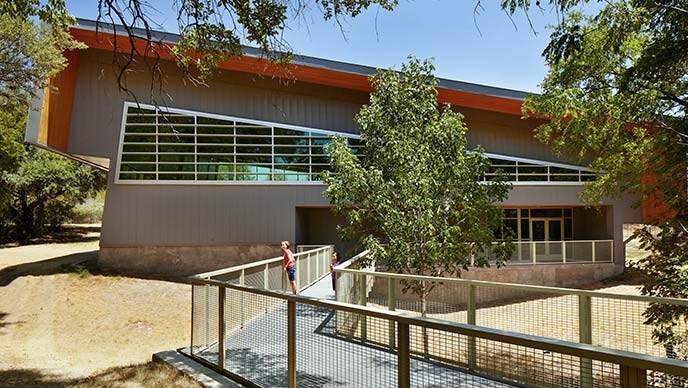
Baylor soon organized a team of volunteers to excavate the area around where the first bone was found. Over the next 12 years (1978 to 1990), they found the fossil remains of 16 Columbian mammoths. They appear to be a "nursery herd", which is a handful of adult females tending a larger number of juveniles. The herd appears to have all died together in a single natural event, such as possibly a flash flood.
All of the remains from the first 16 mammoths were hauled off to a museum at Baylor. Whether they decided they had more than enough to study, or they simply ran out of storage space, Baylor decided to continue excavating for a while, but not remove the fossils from the ground. Between 1990 and 1997, they uncovered six more mammoths and a few other animals. Fossils, once exposed to sun, rain and wind, quickly deteriorate, so Baylor and the city of Waco constructed a building over the excavation site, as shown in the photo above.

Each mammoth uncovered was given a single letter designator, Mammoth A, Mammoth B and so on. The biggest mammoth found at this site was a big bull labeled "Mammoth Q", so we naturally felt a certain affinity for this big guy! Mr. Q was 14-feet tall at the shoulder, and his head and neck went up another 6 or 7 feet.
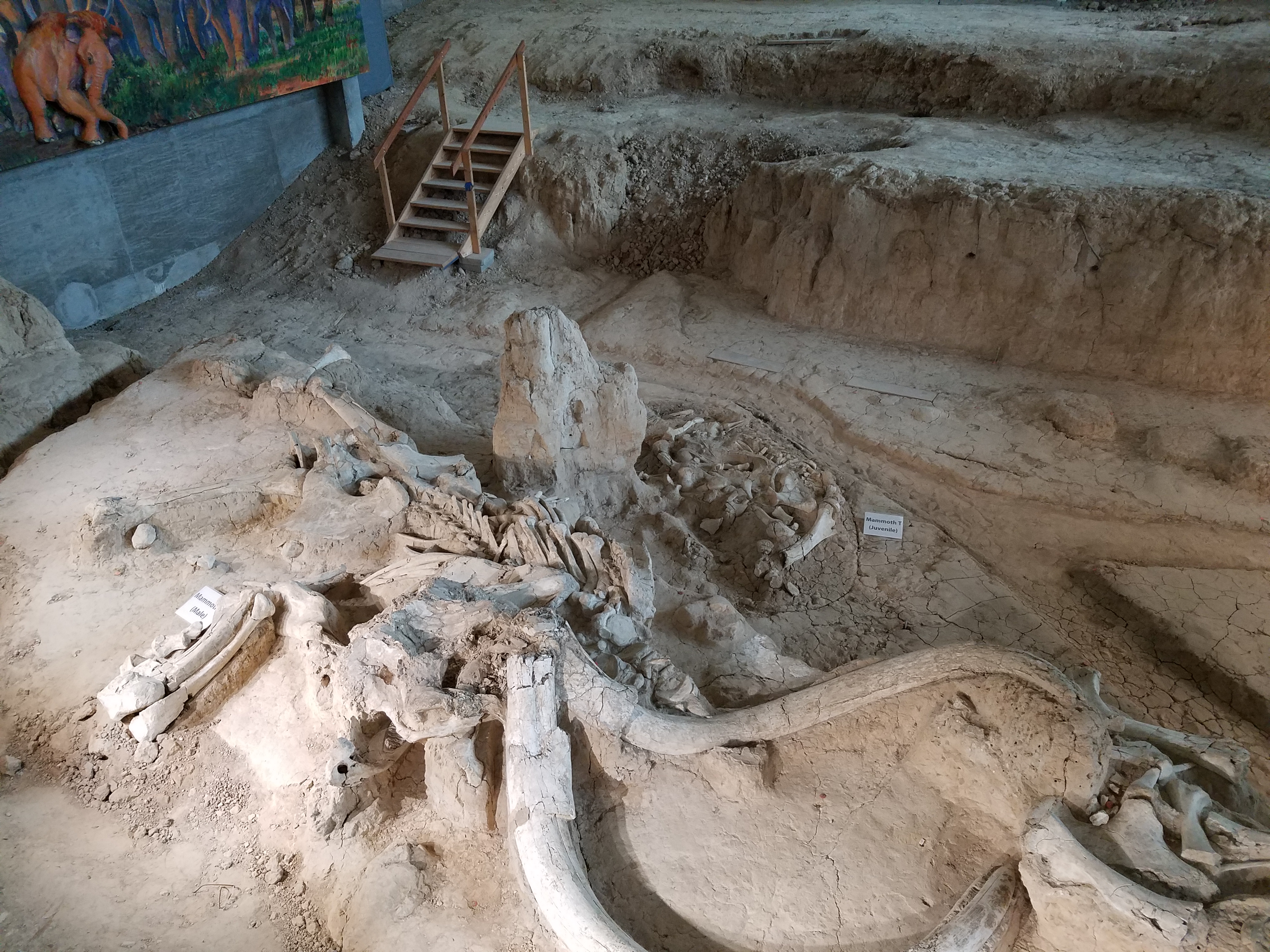
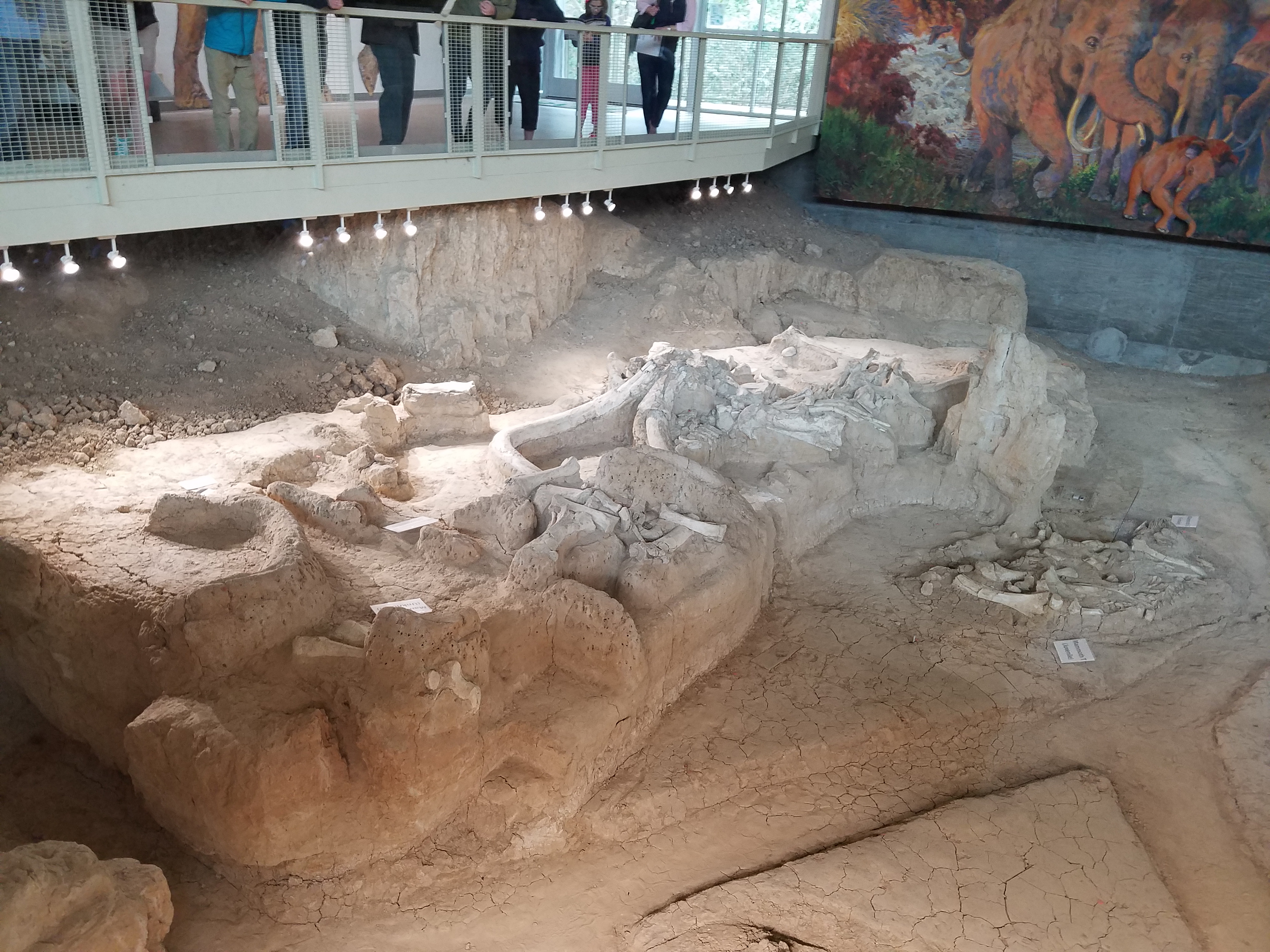
The next picture is an adult female mammoth. Note that a short distance above the "Mammoth W" sign is an oval slightly-cupped object. Looks a little like a soap dish. That is a mammoth tooth! Mammoths ate grasses, trees and bushes, so they needed big flat teeth to grind the vegetation. While we're familiar with humans who go through two sets of teeth (baby, then adult), mammoths went through six sets of teeth, each one larger than the previous. Thus biologists can estimate the age of a mammoth by measuring the size of its teeth.

The next picture is a little unexpected. It is the fossil remains of a camel. A North American camel, so apparently they are indigenous to the Americas as well as Africa. The guide said that it is relatively common to find herds of mammoths along with a few camels, so perhaps those two species had some sort of symbiotic relationship.
Elsewhere in this same area they found bones from an alligator, a large turtle shell, and a tooth from a saber-toothed tiger.
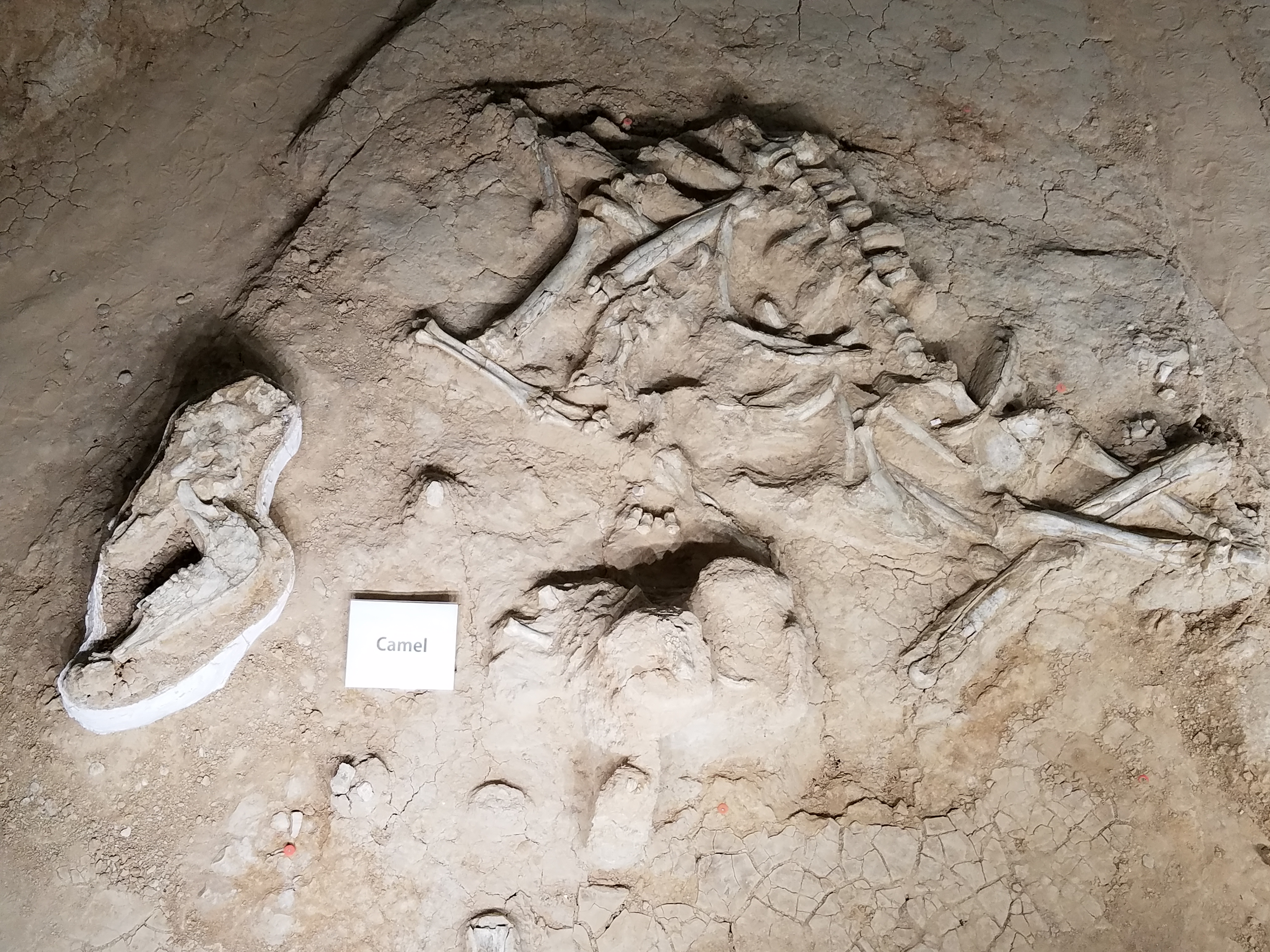
This whole excavation site started when two guys spotted a bone sticking out of the ground. The picture below shows a replica of that bone. It's a femur, which is the upper bone in your leg. Compare that huge bone to Lois' leg or the typical human femur just to the left. Yeah, I think that would get my attention!
